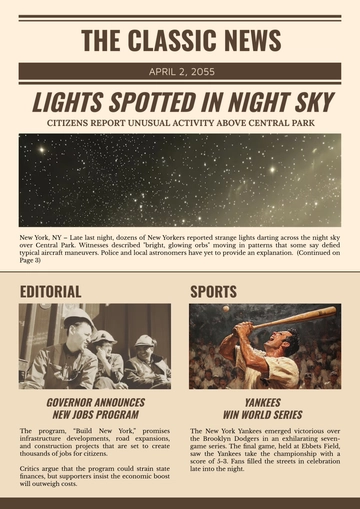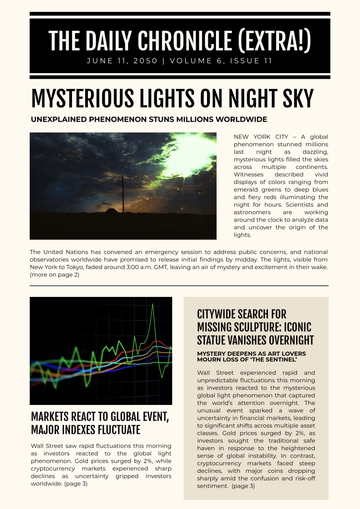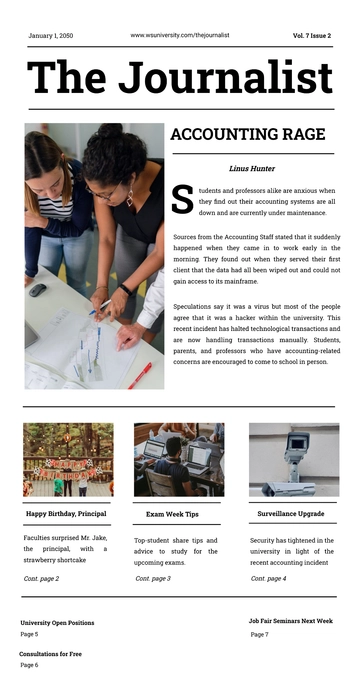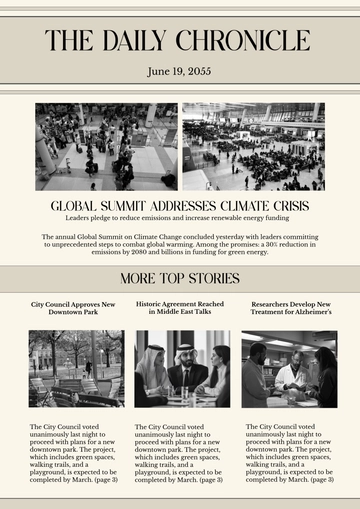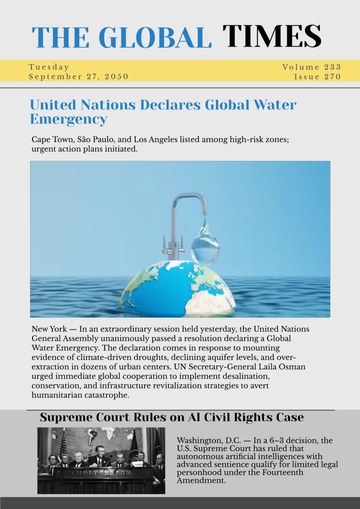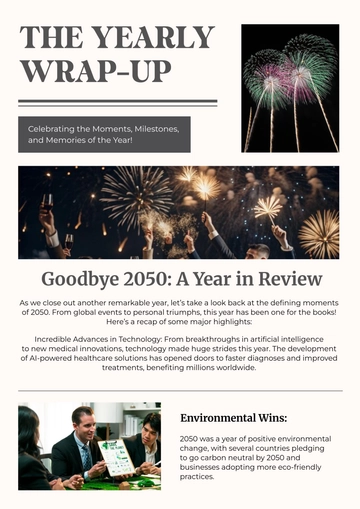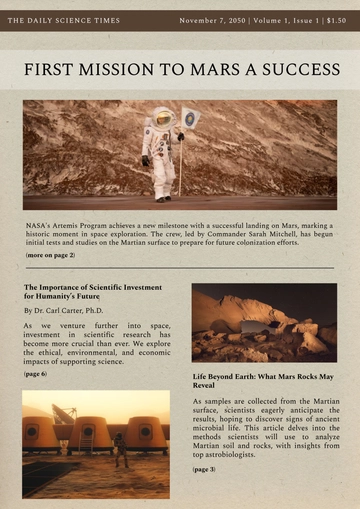Free Newspaper Project Report

Project Report: Investigation into Youth Unemployment Trends
Introduction: Youth unemployment remains a pressing concern with profound implications for societal well-being and economic stability. This report presents findings from a comprehensive investigation into current trends and underlying causes of youth unemployment in the Greater Metropolitan Area (GMA). The study aims to shed light on the challenges faced by young adults aged 18–24 in securing meaningful employment and proposes actionable strategies to alleviate these issues.
Methodology: The research employed a mixed-methods approach to gather robust data. A survey was distributed to 1,000 randomly selected youth across various socio-economic backgrounds within the GMA. The survey collected data on employment status, educational qualifications, and perceptions of job opportunities. Additionally, focus groups were conducted with employers, educators, and youth advocacy groups to obtain qualitative insights into barriers to employment and potential solutions.
Key Findings:
Skills Mismatch: A significant number of respondents reported possessing higher education qualifications but struggled to find jobs matching their skills and educational background.
Sectoral Disparities: Employment opportunities were predominantly available in the service sector, while opportunities in high-growth sectors like technology and healthcare were limited.
Geographical Variances: Youth unemployment rates varied significantly across neighborhoods, influenced by local economic conditions and access to transportation and infrastructure.
Digital Skills Divide: Digital literacy emerged as a critical factor influencing employability, with disparities noted among youth from marginalized communities lacking access to technology and training.
Recommendations: Based on the findings, the following recommendations are proposed to address youth unemployment in the GMA:
Enhanced Career Counseling Services: Expand career guidance programs in schools and community centers to better align educational choices with labor market demands.
Promotion of Internships and Apprenticeships: Encourage partnerships between educational institutions and local businesses to provide practical work experience and skill development opportunities.
Investment in Digital Infrastructure: Improve access to digital resources and training programs in underserved communities to bridge the digital divide and enhance employability.
Support for Entrepreneurship: Provide funding and mentorship programs to encourage youth entrepreneurship and the creation of small businesses in emerging sectors.
Conclusion: Addressing youth unemployment requires collaborative efforts from government, educational institutions, businesses, and community organizations. By implementing targeted interventions and fostering an inclusive economy, we can empower young adults in the GMA to achieve economic independence and contribute meaningfully to society.
Acknowledgments: We extend our gratitude to all survey participants, stakeholders, and partners who contributed their time and insights to this research endeavor. Their valuable input has enriched our understanding of youth unemployment issues in the GMA.
References:
Statistics Canada. Labor Force Survey, 2050.
Greater Metropolitan Area Economic Development Report, 2050.
Appendices:
Appendix A: Survey Questionnaire
Appendix B: Focus Group Discussion Guide
This report serves as a blueprint for informed decision-making and advocacy efforts aimed at addressing the complex challenge of youth unemployment within our community.
- 100% Customizable, free editor
- Access 1 Million+ Templates, photo’s & graphics
- Download or share as a template
- Click and replace photos, graphics, text, backgrounds
- Resize, crop, AI write & more
- Access advanced editor
Streamline your journalism projects with Template.net's Newspaper Project Report Template. This editable and customizable template is perfect for creating professional reports. Easily editable in our Ai Editor Tool, it ensures your content is polished and engaging. Ideal for students, journalists, and project managers, this template simplifies the report creation process.


